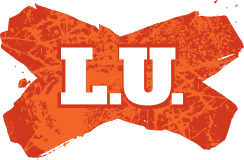The off-field overheads are being set by the powerhouse clubs.
When clubs such as Brisbane/Gold Coast/N-QLD are limited by the salary cap on the amount of money they can spend on players, they simply allocate that excess money to other area's that facilitate success on the field. The Broncos for the 2007 season was spending just 16% of their revenue on 1st grade player salaries.
The idea that the Salary Cap creates a level playing field is a half-truth. Sure once in a blue moon a club like the Panthers or the Wests Tigers in 2005 will luck into the right mix on the field to jag a premiership, but for the most part club success is tied to the revenue generated.
Clubs are still racing to outspend each other, and the battle of the haves and have-nots exists, it's just that player wages have been frozen in the equation, thereby forcing players to look overseas to earn their true worth. If the Broncos football department are outspending the Sharks by over 300%, they are going to have far greater success over a long period of time.
To expand on the issue of money required to field an NRL side:
Brisbane & The Gold Coast will be looking at revenue of $23m-$25 million this coming financial year (and only about 400k-500k of that is poker machine revenue).
The lower spending Sydney clubs (Cronulla, Penrith) are looking at revenue of $10m-$12m.
Lets assume that all clubs are spending up to the $4.1m salary cap + $1m in Toyota Cup/2nd tier/Junior Scholarship Payments.
Brisbane/Gold Coast are therefore spending $18m-$20m on football operations other then the playing roster.
Cronulla/Penrith are therefore spending $5m-$7m on football operations other then the playing roster.
Therefore the SE-QLD clubs are outspending the Sydney clubs by a factor of 250-400%. The sort of competitive edge that gives a team is huge: if clubs want to stay competitive they will need to match that sort of money.
It's also shows how lopsided the figures are in terms of the cut of revenue the players get, now down to 16.6% when in the 80's it was about 75-80% of turnover. I'd be annoyed if I was a player that was bringing in the revenue and was getting such a pitiful slice that isn't even being adjusted with the profit growth of some clubs.
It does however raises the (favourable) issue of what to do with all the surplus cash. I know that the Broncos are looking at fielding the largest full time coaching staff in Australian domestic sport next year.
Ivan Henjak - Coach (Full-time) assisted by:
- Allan Langer - Assistant Coach: Halves (Full-time)
- Shane Webke - Assistant Coach: Forwards (Full-time)
- Paul Green - Assistant Coach: Skills (Full-time)
- Peter Ryan - Assistant Coach: Defence (Full-time)
- Mick Devere - Assistant Coach: Backs and Kicking (Full-time)
Dean Benton - Performance Director (Full-time) assisted by:
- Andrew Croll - Athletic Performance Coach (Full-time)
- Dan Baker - Strength Coach (Full-time)
- Tim Gabbett - Sports Scientist (Full-time)
If the money can't be spent on retaining players like Lockyer or Eastwood from going to SuperLeague, it may as well be spent on supporting the players to ensure they club has the best chance of making the finals.
The AFL released it's review of the 2007 season last year which touches on the link between club revenue and success:
http://www.gfc.com.au/News/NewsArticle/tabid/3933/Default.aspx?newsId=56150
http://www.realfooty.com.au/news/news/harris-warns-of-afl-class-system/2007/05/30/1180205337951.html
